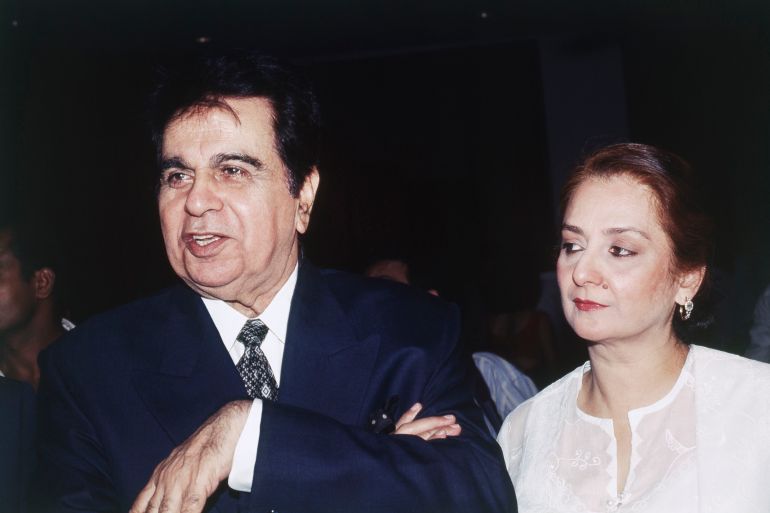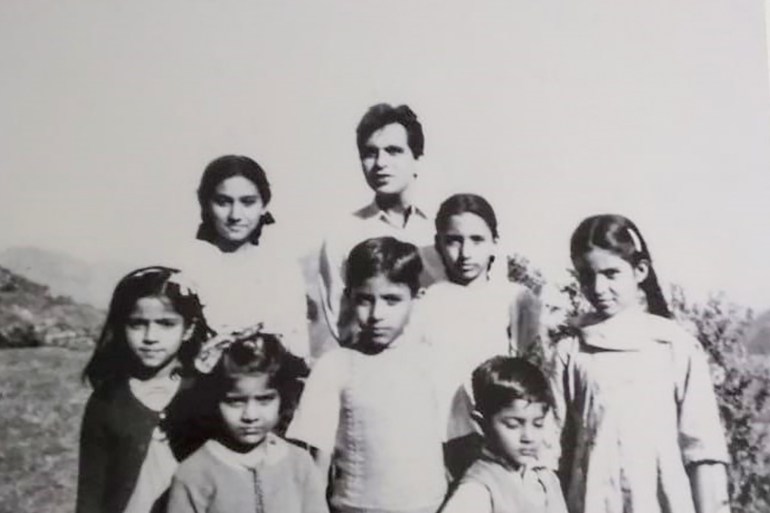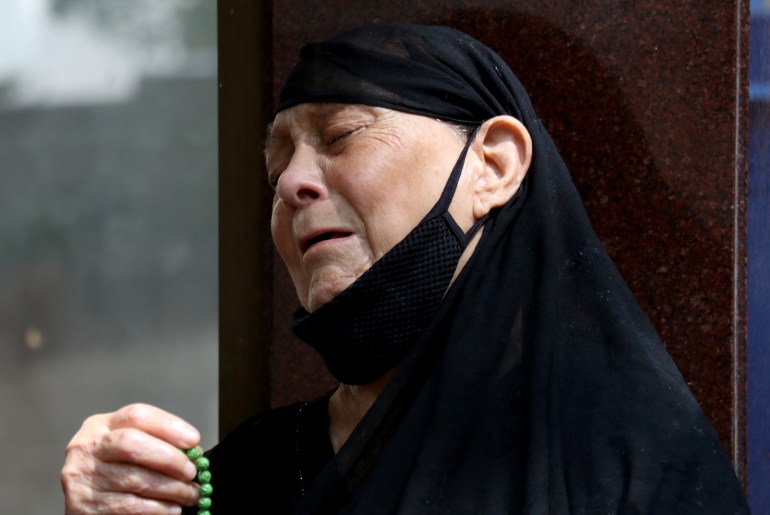Obituary: ‘Dilip Kumar was our chaste love’
On Kumar’s death, a writer remembers the legendary actor accepting an unknown gentleman’s lunch invite, making him a hero for his children.

Mumbai, India – I first met Dilip Kumar on the pages of an old family album, revealed from behind the fine onion skin paper that covered the black and white images.
As a child, I assumed him to be a handsome unknown relative who I was yet to meet, or a younger version of someone I knew. Like the children posing with him, who I was told were my aunts and uncles. Either way, for the rest of my life, his smile and lanky grace seemed familiar: not movie-star familiar, but like someone I knew.
Keep reading
list of 4 itemsIndia’s Modi greets Dalai Lama on birthday in rare phone call
Twitter loses immunity in India over user-generated content
COVID may shut colonial-era cinema in India’s Himalayan town
Years later, I learned the story behind the photos. It was one of our favourite legends, lovingly retold and polished at each family gathering.

In 1957, my paternal grandfather had brought his large brood for a vacation from their home in Rampur in the northern state of Uttar Pradesh to the pine forests of Ghorakhal, near Nainital, now in Uttarakhand state. The idyllic charms of the location had also drawn acclaimed director Bimal Roy to shoot Madhumati, his reincarnation-centred love story, nearby.
My eldest aunt, like many teenagers of the era, had a mountain-sized crush on Dilip Kumar. So when she heard he was shooting nearby, she caused a stir by running out of the house, determined to see him.
But by the time she reached his guesthouse, the unit had left.
My grandfather must have been an indulgent parent. He consoled his breathless daughter on her return by promising to invite the actor home. Incredibly, he did. And more incredibly, his invitation was accepted.
Provisions for the feast had to be rushed from Rampur. By all accounts, it was a lavish affair. After the meal, the actor posed for photos with the children. This was how he ended up in our treasured trunk of photos, and why Madhumati was anointed our family film.
Unfortunately, most of my family were either too young or too starstruck to have memories of the other guests. Only my Dadi (paternal grandmother) remembered noted director Bimal Roy as the “Bengali gentleman” who bewildered her by asking for a white dhoti to use in a shot.
Dilip Kumar – an epic life, spanning such an arc of cinema history, Indian experience and for many of my generation interwoven with our earliest memories of Hindi cinema as much as of our parents. https://t.co/AAYAiM3Wdb
— Paromita Vohra (@parodevi) July 7, 2021
It took Dilip Kumar’s translation for my grandmother, who wore a gharara, a traditional outfit, to understand that Roy needed a sari to use as a backdrop. She offered a bedsheet, which would endure as my family’s tangible presence in the film. Each time we watched the film, my cousins and I would try to spot it in a song sequence. “Ours”, we would say proudly, pointing to the invisible fabric only we knew was there.
I grew up in a joint family in pre-liberalisation India, a lifetime before cable TV or regular electricity, a time when entertainment was rationed to a few hours a week. My family’s videocassette recorder (VCR) – a gift from a Dubai based aunt – was a great luxury. But it was intended for my Dadi, and we could only watch movies that were “family-friendly”.
So we were children of the 1990s, fluent in the cinema of the 1950s. In the carnival of black and white images that played across our screen, there was a lot of Dilip Kumar. He was skilled in the “pakeeza mohabbat” (chaste love) my Dadi tolerated, and the music of his romances was the soundtrack to our collective lives.
Consequently, I was the only child in school who knew (or cared) that Dilip sahab, as he is respectfully known as, had learned to play the sitar “for real” for a sequence in Koh-i-Noor (1960). I knew that my eldest aunt had named her daughter Tarana in honour of his first film with Madhubala, which I loved watching for the sparkling flirtation of the lead pair. And I assumed that all men could sustain dangerous wounds without damaging their well-ironed shirts.
Dilip Kumar was part of the collective coming of age of my clutch of cousins. For us, young women living sheltered lives in a small town in northern India, he offered acceptable glamour, a brand of stardust that contrasted with the violence and sexual innuendo of the movies of our own times. The glitzy covers of film magazines such as Cine Blitz and Stardust had a different, more dangerous allure. (Which was why we read them secretly in the loo.)
Dilip Kumar was our chaste love.

For my Dadi, he offered a different kind of escape. When I think about the films she watched over and over again on her VCR, I see her battle with depression and her fear of solitude. All her choices were determinedly upbeat versions of the actor, his cheeky smile and hair windswept, hands thrust in his pockets. Much like she had seen him in the summer of 1957.
The movies of her long-ago lunch guest were a place where my grandmother’s mind found rest and humour, that allowed her to clap her hands in delight at his shenanigans repeatedly. Everything that came after, she struggled with. When things got serious towards the end of these movies, she would tell us to switch off the tape. It was only years later that I became acquainted with the sad endings of some of these stories, and with the “Tragedy King” tag of the actor.
It took the darkness of the pandemic for me to revisit his films. Through the early months of the lockdown in India, I sought refuge from the sense of fear and suffering around me by revisiting movies seen years ago. Like my Dadi, I found myself returning to Dilip Kumar’s familiar silhouette on screen as a way to make sense of a suddenly unfamiliar world. Not all of these films have aged well. But despite his increasingly precarious health and frail figure in real life, the actor’s on-screen persona still offered for me a sanctuary, a path into a gentler world.
Perhaps this was at the heart of his enduring appeal over generations. The actor achieved greatness not just by inhabiting different characters, but by allowing his audience to glimpse themselves in his persona – by becoming one of their own. Just as he had appeared to me in the photo album where I saw him first. Among the many tributes to his kindness and grace that will appear, I offer this glimpse of the actor as a young man, who accepted an unknown gentleman’s invitation to lunch, and made him a hero for his children.